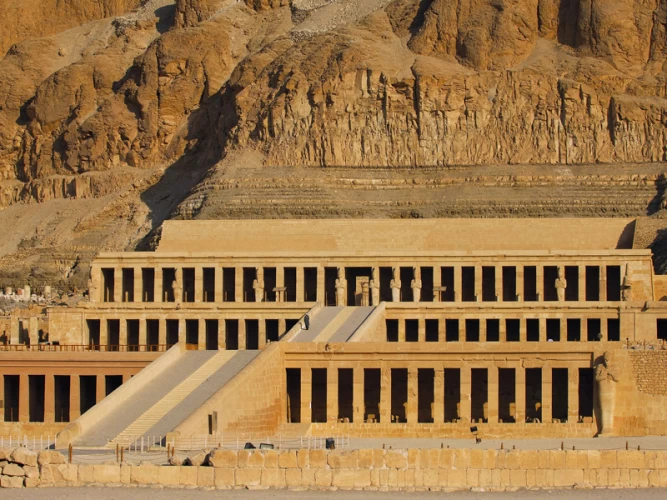After a delicious breakfast at your hotel, your professional tour guide will meet you in the lobby to begin your first enjoyable trip in Egypt. Today, you will visit the stunning Giza Pyramids, which are an impressive engineering marvel and a dazzling astronomical marvel. The ancient Great Nile River was the earthly clear reflection of the Milky Way, which, to the ancient Egyptians, represented a celestial Nile.
The Giza pyramids follow the arrangement of the stars of the famous and big Orion constellation in the stunning sky. The king's burial chamber was connected by several small openings extending from this chamber to the outside of the pyramid. It was believed that these openings were built solely to ventilate the burial chamber, but it has now been revealed that these openings always face a binary star in the sky. The ancient Egyptians believed that the North Star marked the end of the deceased pharaoh's journey, ascending to be reunited with it.
You will visit the beautiful Valley Temple of Khafre, the idea of which began during the reign of King Sneferu, when he began building an entire facility around the pyramid. At that time, the ancient Egyptian priests transferred the performance of important religious rituals and the process of preparing and mummifying the dead for their encounter with the gods from the pyramid area to the Valley Temple. Religious ceremonies were also held there.
You will also see the Great Sphinx, which was the center of sun worship during the Early Dynastic Period, before the Giza Plateau became a major necropolis in the Old Kingdom. In the New Kingdom, the Sphinx became associated with the sun god Horemakhet. The famous King Amenhotep II built a charming temple to the northeast of the Great Sphinx nearly 1,000 years after its construction, dedicating it to the worship of Horemakhet.
You will visit the magnificent Egyptian Museum in Tahrir Square, which is an archaeological and architectural masterpiece by all standards, with even the basement of the museum being a treasure in itself. The basement has received boxes of rare artifacts, in addition to boxes of archaeological discoveries, and recently, boxes of recovered artifacts that were repatriated and placed in the basement after being displayed in temporary exhibitions. Taking all these items into account, we can say that the number of artifacts in the Egyptian Museum's basement has probably doubled to more than 100,000 valuable pieces, such as pottery vessels, small masks, and amulets discovered by the German mission at Qubbet el-Hawa, and precious mummies in their coffins from the Canadian mission at Dakhla Oasis.
After finishing this spectacular informational tour in Cairo, we will transfer you back to your beautiful hotel in Cairo.





















